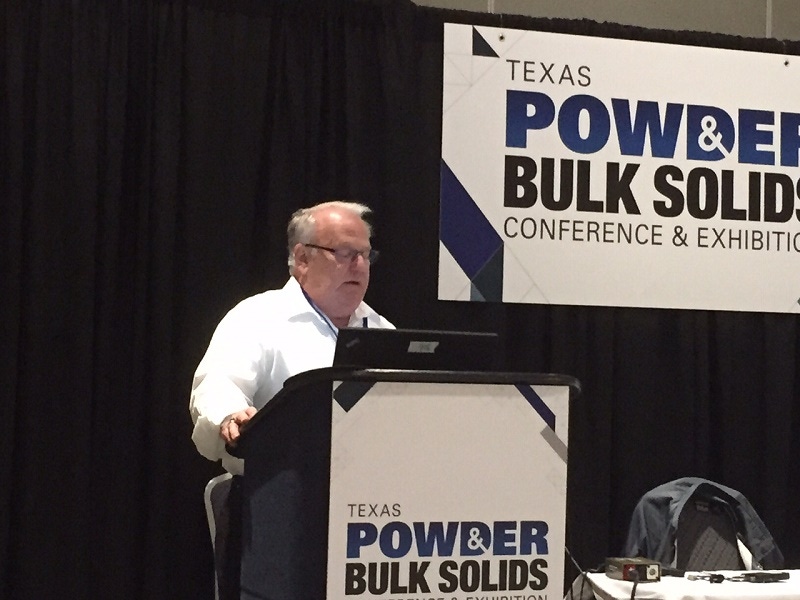October 15, 2015

A federal agency’s review of the lessons learned at the West, TX fertilizer fire and explosion in April 2013 highlighted the last day of the Powder & Bulk Solids Texas Conference & Exhibition Wednesday at the NRG Center in Houston.
Manny Ehrlich, board member with the U.S. Chemical Safety Board, delivered the morning keynote for the conference, detailing the things that should have been done better by all parties – both industry and governmental – that could have prevented the loss of life and injuries that resulted from the blast. “Everyone is responsible,” Ehrlich said. “Everyone has a piece of the pie.”
In his hourlong presentation, Ehrlich listed a number of things that the West Fertilizer Co., the city, emergency responders, and government agencies could have improved in avoiding the damage and destruction that resulted from the blast. Fifteen people were killed and more than 150 were injured in the fire and explosion, and nearby apartments, a school, and homes in the area were damaged.
One of the things Ehrlich focused on wa the physical location of the school and residences. The community grew up around the West Fertilizer facility and as a result the school and residences were located too near the plant.
Ehrlich also spoke about how emergency responders and the volunteer fire department in West, TX lacked the proper training for understanding what they were dealing with. Most of the training emergency personnel in the city received was on anhydrous ammonia from the facility, and not ammonium nitrate – the cause of the blast. It’s estimated that more than 250 tons of ammonium nitrate were present at the facility when the explosion occurred.
The West, TX emergency responders’ unfamiliarity with ammonium nitrate is not unique in America, Ehrlich said. He estimated that one percent of the 30,000+ volunteer fire departments across the country have the proper training for dealing with hazardous materials. Volunteer firefighters need more training, more resources, and to ask the right questions when it comes to what is in their community. “You have to think about what you’re dealing with,” Ehrlich said.
Government agencies also need to develop common language and information when it comes to dealing with hazards and risks and understand what the risks are, Ehrlich said. Because agencies like the Environmental Protection Agency, Department of Transportation, OSHA, and Department of Homeland Security were looking and focused on different sets of information, the danger at the fertilizer company was missed.
Ehrlich also focused on defining hazards versus risks. A company that makes ammonium nitrate cannot communicate risk via safety data sheets or material safety data sheets – those sheets can convey the hazards of the material, but not the risks.
Ehrlich said datasheets may contain a list of hazards, but the risk also needs to be measured. He defined risk as "the application of the hazard to that circumstance – what the consequences might be."
More oversight was needed for the West, TX explosion, and more oversight is needed to ensure reasonable risks assessments and planning is done at local levels, although you can never completely eliminate risk. “You cannot regulate out risk,” Ehrlich said.
Joe Florkowski is the managing editor for Powder & Bulk Solids. He can be reached at [email protected]
You May Also Like


